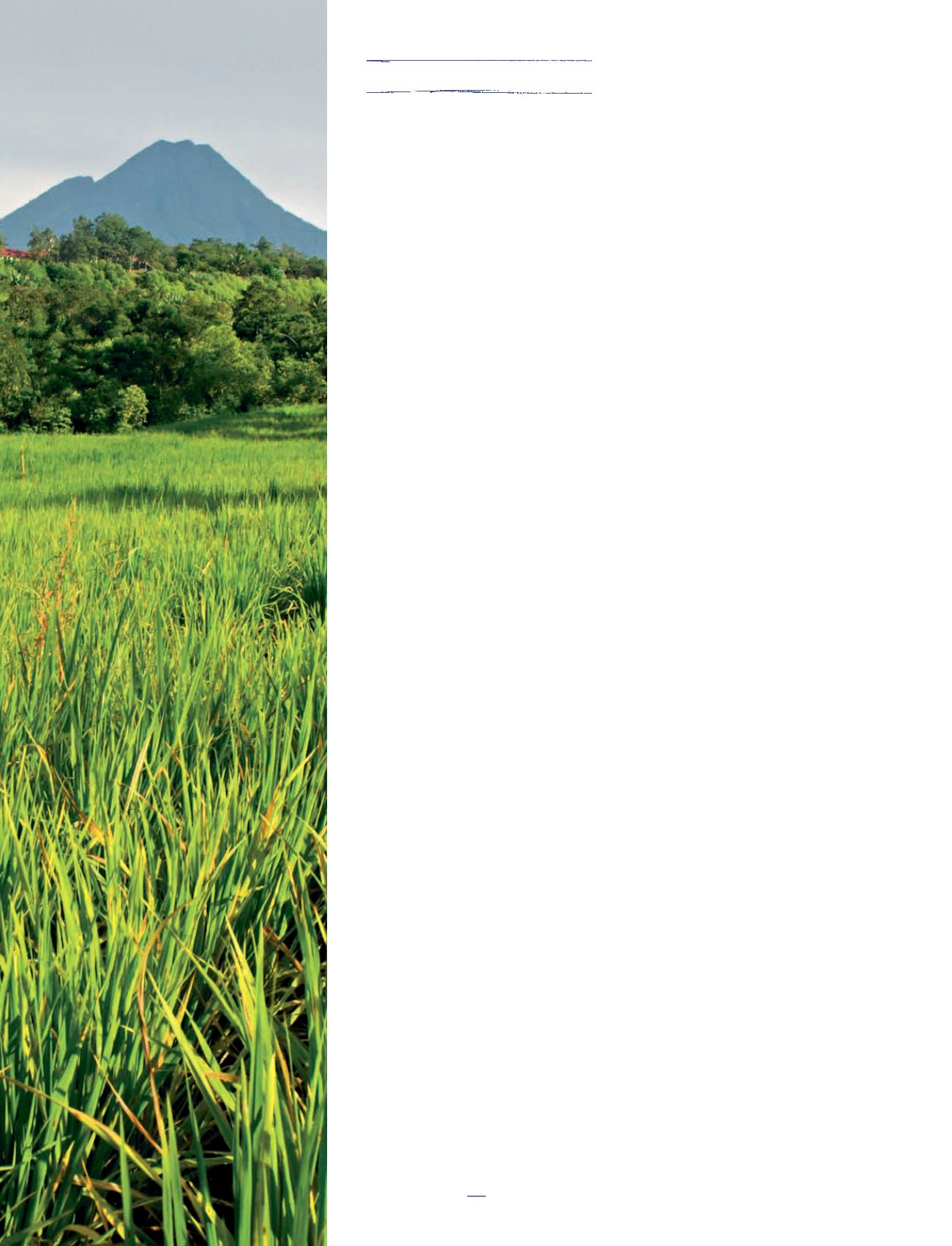
95
FARM TO TABLE
TREASURES
OF THE FIELDS
Philippine agriculture is full of hidden treasures.
Aurora Almendral sits down with restaurateur and
food anthropologist Amy Besa to find out how these
rare edibles can make a return to our dinner tables
FOOD PHOTOS BY
JAR CONCENGCO
FOOD STYLING BY
TATA MAPA
T
he Philippine landscape
is full of secrets. Nipa
palms, which sway
by the hundreds on
embankments where
the rivers meet the seas, can be tapped
for a sap that makes a rich, caramelly
syrup that stops short of cloying. In
the vast, carved mountainsides of the
Cordilleras, the blades of rice produce
grains that vary in color, texture and
flavor, depending on the tribal family
that works each terraced field. Tangled
within the vines and tendrils that
make up the emerald-green cover of
the Philippine countryside, are edible
leaves that are bitter, woody, creamy
or sour.
The most alluring secrets are the
ones hidden in plain sight. Vinegar,
sour fruits and leaves,
patis
(fish
sauce), rice and native greens are
cornerstones in native Philippine
cooking. Industrially produced
versions of these ingredients can be
found packaged in every market, but
that ubiquity belies a diversity as varied
as the Philippine landscape itself. We
are used to standardized powdered
sinigang
mixes, but traditional sinigang
holds regional surprises: the one found
in Panay, flavored with round
batwan
fruit, bursts with a different sourness
from the one in Bicol, flavored with
slender green
iba.
It’s this richness that Amy Besa,
along with her husband Romy
Dorotan, has spent the last several
years searching for and documenting.
Besa and Dorotan are the husband-
and-wife team behind the Purple
YamMalate eatery, and authors of
the award-winning book
Memories of
Philippine Kitchens
, a cookbook and
memoir that delves into Philippine
food, culture and history. The project
sent Besa and Dorotan searching fields
fromBicol to Bukidnon, and knocking
on the doors of the farmers in Ilocos
to find treasures otherwise locked in
provincial obscurity: blocks of
tultul
salt as smooth as marble in Guimaras, a
giant taro whose massive heart-shaped
leaves rose above the horizon in a single
barangay in Sorsogon — and nowhere
else. Besa tries to preserve what she
discovers of native Filipino food ways
with her culinary heritage institute,
Ang Sariling Atin
,
and in this feature
shares a peek into the vast deposits of
gems she has mined. When it comes to
the country’s rich agriculture, she has
realized that, “We’re just scratching
the surface.”


